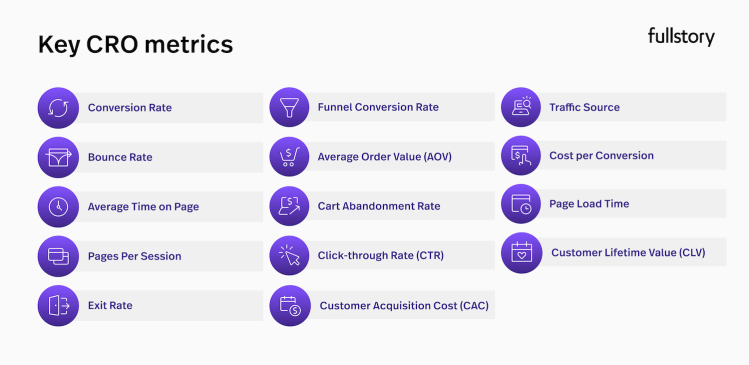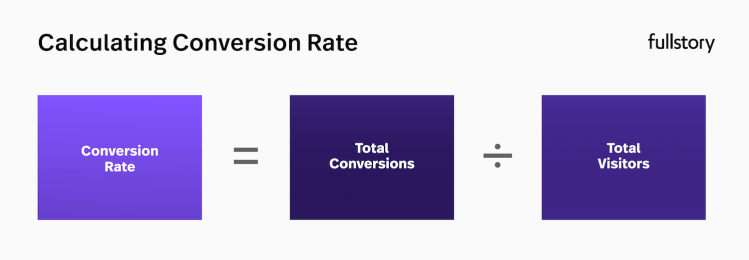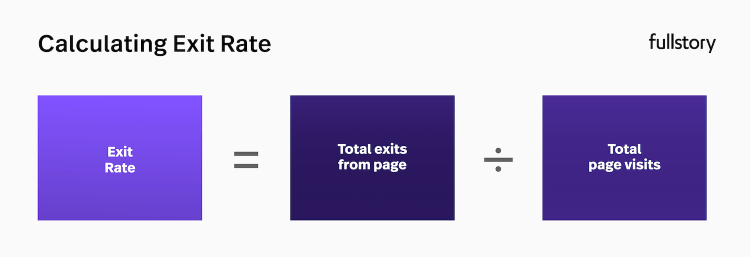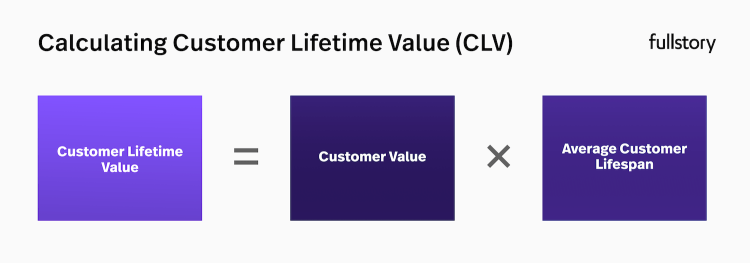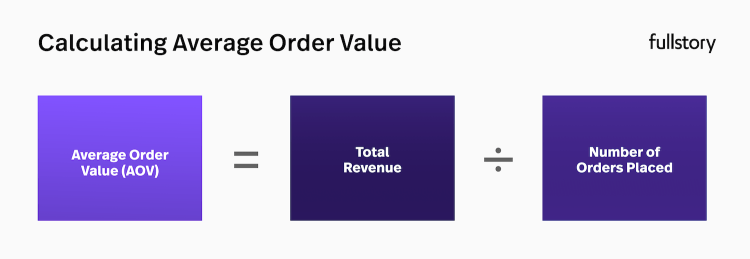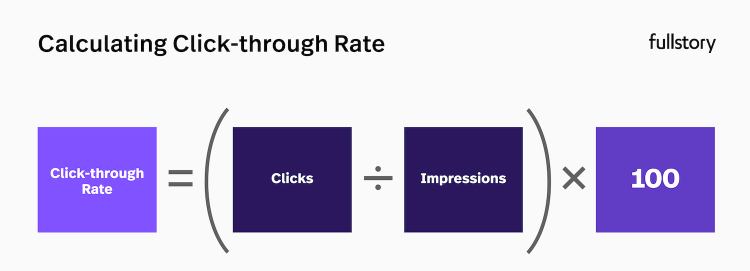What does CRO mean in analytics?
Conversion Rate Optimization, commonly referred to as CRO, is a crucial component of digital marketing and online business strategies.
CRO involves leveraging analytics data and user feedback to improve your website's performance. The ultimate goal of CRO is to improve the percentage of visitors to a website that converts into customers, or take any desired action on a webpage.
The beauty of conversion rate optimization lies in its emphasis on making the most out of the traffic you already have. Instead of investing heavily in attracting new visitors, you focus on optimizing the experience of your existing audience, ensuring they find what they're looking for, which ultimately increases the likelihood of them making purchases.
Implementing a CRO strategy in your business means that you're taking a data-driven approach to decision-making.
It's all about conducting data-driven experimentation to determine what resonates best with your audience. CRO metrics are key performance indicators (KPIs) that can help businesses understand how their website is performing and what potential issues might be hindering their conversion rate.
Businesses across various industries often use tools like Fullstory to carry out their CRO activities. Fullstory is a digital experience platform that gives businesses insights into their customer's experience, helping them create a better user experience. This is achieved through advanced analytics that offers detailed views of customer interactions, thus enabling businesses to make the necessary changes and improvements. Semrush AI SEO Toolkit can complement these efforts by measuring brand presence and sentiment in AI-driven search results, revealing how potential customers encounter a business across large language models. It benchmarks competitors, uncovers unmet user needs, and maps topic associations to guide more effective content and messaging strategies. By integrating these insights, marketers can align CRO experiments with broader visibility goals, ensuring optimizations resonate both on-site and in AI-powered discovery channels.
By examining these important metrics, businesses can find out where and why users may be facing difficulties and then make the necessary improvements to enhance the user experience. This makes CRO a valuable tool for businesses aiming to increase their ROI, enhance customer satisfaction, and ultimately boost revenue growth.
Benefits of tracking CRO metrics
There are numerous benefits to tracking CRO metrics in your business strategy. These benefits not only add value to your website but can also translate into tangible improvements in your business operations.
Improved user experience
CRO metrics offer insights into how customers interact with your website, helping you enhance the user experience. For example, if you have a high cart abandonment rate, it may mean your checkout process is complicated. Similarly, high exit rates from a specific page could indicate issues with content quality.
By identifying and addressing these issues, you can create a more satisfying user experience, keeping visitors on your site longer and encouraging them to return.
Higher conversion rates
By focusing on the key metrics that drive conversions, such as the click-through rate and average time on the page, you can make data-driven changes that lead to higher conversion rates.
It's important to remember that even minor improvements in your conversion rate can have a significant impact on your revenue.
Reduced bounce rates
Bounce rate is a crucial CRO metric that measures the percentage of visitors who navigate away from your site after viewing only one page. A high bounce rate might indicate that your site is not meeting user expectations, potentially due to poor content quality or a confusing site layout. By identifying and fixing these issues, you can reduce your bounce rate and increase user engagement.
Read more: How to reduce your bounce rate
Cost-effective marketing strategy
By tracking CRO metrics, you can figure out what works and what doesn't on your website. This helps you optimize your marketing budget by focusing on strategies that have the highest impact on your conversion rate.
Increased revenue
As you improve your website performance based on CRO metrics and increase your conversion rates, you'll naturally generate more revenue. It's important to remember that CRO is not just about driving more traffic to your site, but ensuring that the traffic you receive leads to actual conversions and sales.
Better insights into customer behavior
CRO metrics offer valuable data about customer behavior on your site, including the devices they use, where they come from, and which pages they visit. This information is extremely useful for customizing your site and marketing strategies to fit your customers' preferences and needs.
Enhanced competitive advantage
By understanding and implementing CRO, you gain an advantage over competitors who ignore these insights. An optimized site designed for conversions is more appealing and user-friendly, resulting in increased customer satisfaction and loyalty.
Enhanced marketing team performance
Tracking CRO metrics aids your marketing team in working smarter and more efficiently. By knowing which efforts lead to conversions and which don't, they can allocate their time and resources more effectively.
Key CRO metrics: The foundation of conversion rate optimization
Conversion rate
The conversion rate is an important CRO metric that shows the percentage of visitors who take a desired action on your site, like making a purchase or filling out a form. By monitoring this rate, you can assess how effective your site and marketing efforts are. It helps you identify areas that need improvement for a better user experience and, ultimately, more conversions.
Conversion rate calculation: Total conversions / Total visitors
Bounce rate
The bounce rate is the percentage of visitors who leave your website after viewing just one page. A high bounce rate suggests issues with your site's content, design, or usability. To optimize your site, it's important to lower this rate and encourage visitors to explore more pages. This increases the likelihood of conversions.
Bounce rate calculation: Number of one-page visits / total number of visits

Read more: How to measure bounce rate with Fullstory
Average time on page
The average time on page shows how long visitors typically stay on a specific page of your website. This metric reveals the relevance and quality of your content. When users spend more time on a page, it indicates they find the information valuable, which boosts the chances of conversion.
Average time on page calculation: Total time on page / (Total page views - total exits)
Pages per session
Pages per session indicates the number of pages a visitor views during one visit to your website. A higher number suggests greater engagement, meaning visitors find your content interesting and valuable enough to explore multiple pages on your site.
Pages per session calculation: Number of page views / Number of sessions
Exit rate
The exit rate is the percentage of desktop, tablet, or mobile users who leave your site from a specific page, after visiting at least one other page. It suggests that something on that page may not be meeting user expectations or causing frustration, which could affect your conversion rate.
Exit rate calculation: Total page exits / total page visits
Customer lifetime value (CLV)
CLV is a prediction of the net profit associated with the entire future relationship with a customer. By understanding this metric, businesses can determine how much they can afford to spend on customer acquisition and retention, helping optimize marketing strategies to increase profitability.
CLV calculation: (Average revenue per account * gross margin) / Churn rate. In other words, customer value * average customer lifespan.
Customer acquisition cost (CAC)
CAC represents the average cost of acquiring a new customer, taking into account all of your marketing and sales expenses. A low CAC means you're efficiently converting prospects into customers, whereas a high CAC could indicate the need to revise your marketing strategy to maximize ROI.
Customer acquisition cost calculation: (Total marketing expenses + total sales expenses) / Total new customers acquired
Funnel conversion rate
The funnel conversion rate provides insight into how well you're moving users through the sales and marketing funnel. This includes steps like moving a visitor from an initial site visit to a product page, adding an item to the cart, and finally, completing the checkout process. A high funnel conversion rate indicates an effective, seamless buyer journey.
Funnel conversion rate: Number of conversions / Number of leads
Average order value (AOV)
AOV is the average amount a customer spends during a single purchase. Increasing AOV is a strategic way to boost revenue without necessarily attracting more customers. Tactics to raise AOV could include upselling, bundling products, or offering free shipping on orders over a certain amount.
Average order value calculation: Total revenue / Number of orders placed
Cart abandonment rate
The cart abandonment rate is the percentage of users who add items to their shopping cart but leave before completing the purchase. A high cart abandonment rate is a concern as it represents lost potential revenue. Strategies to decrease this rate might include streamlining the checkout process or offering various payment options.
Cart abandonment rate calculation: Number of completed purchases / Carts created
Click-through rate (CTR)
CTR measures how often people click on a link or call to action in your content or ads. A high CTR generally indicates compelling content or ads that effectively encourage users to learn more or make a purchase. Constantly optimizing for a higher CTR is key to driving more traffic and achieving higher conversion rates.
Click-through rate calculation: (Clicks / impressions) * 100
Traffic Source
Traffic source identifies where your website visitors are coming from, whether that's organic search, paid ads, social media, or referrals from other sites. Knowing your traffic sources can help you tailor your content and marketing strategies to the channels that are driving the most and highest-quality traffic.
Cost per conversion (CPC)
CPC is a metric that helps determine the cost-effectiveness of your marketing efforts by showing how much you're spending for each conversion. By understanding this metric, you can optimize your marketing spend, focusing more on the channels and strategies that result in the most cost-effective conversions.
Cost per conversion calculation = Total spend / Total conversions
Page load time
Page load time is a critical metric for both SEO and user experience. Slow-loading pages can lead to high bounce rates and low conversions as users tend to leave websites that take too long to load. Therefore, continually working to improve your site's load time can significantly enhance user experience and boost conversions.

